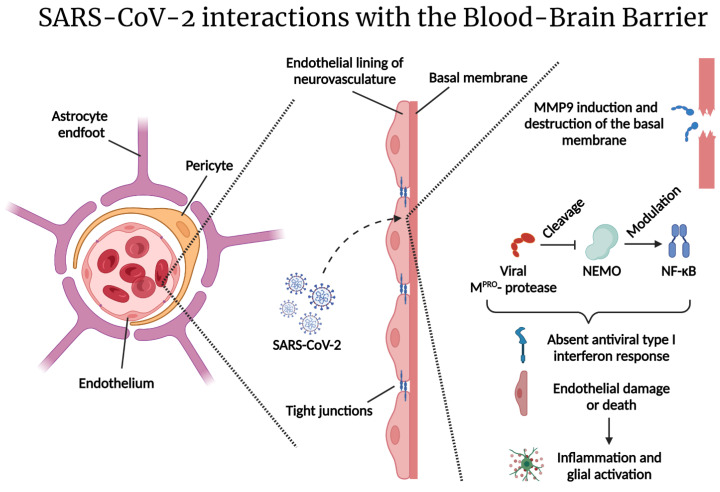Figure 1.
SARS-CoV-2 interactions with the blood–brain barrier: The blood–brain barrier is a semi-permeable barrier composed of microvascular endothelial cells, pericytes, and astrocyte end-feet. Tight junctions restrict paracellular passage of substances and pathogens. SARS-CoV-2 can pass via the transcellular pathway and disrupt the basal membrane. SARS-CoV-2 increases matrix metalloprotease (MMP) expression, leading to the destruction of collagen IV—a major component of the basal membrane [43]. The SARS-CoV-2 protease Mpro may cleave NEMO—a protein that regulates the transcription of antiviral type I interferons [42]. The consequences of these processes lead to endothelial damage, inflammation and, subsequently, glial activation. Figure was created with the BioRender software.

